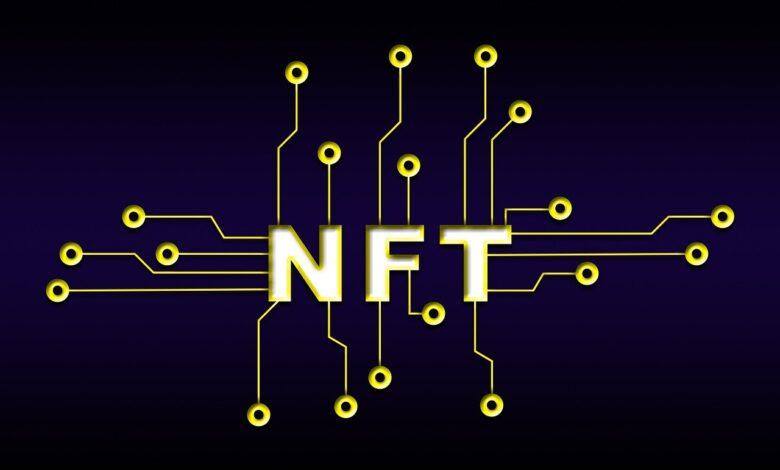Profit from Digital Art – NFTs Unleashed

In an era where the digital realm intertwines seamlessly with traditional artistic expression, the concept of crafting and trading digital artworks as NFTs has emerged as a revolutionary avenue for artists seeking to generate substantial profit and revenue. The transition from canvas to code not only democratizes art but also invites creatives to explore innovative ways of designing their masterpieces, allowing them to connect directly with collectors and enthusiasts in a global marketplace. This paradigm shift opens the door for artists to not only produce captivating artwork but also to monetize their talents effectively.
The process of producing digital art has evolved significantly, influenced by advancements in technology and the burgeoning interest in NFTs. As artists embrace this new medium, the intricacies of marketing their artworks become paramount. Effective marketing strategies are essential for standing out in a crowded digital landscape, ensuring that each piece resonates with potential buyers. Crafting an engaging narrative around one’s artistic vision can enhance the perceived value of each NFT, thereby increasing the likelihood of successful sales and profitable trading.
Moreover, understanding the nuances of the NFT ecosystem is crucial for those venturing into this space. The interplay of design, production, and monetization forms a cohesive framework within which artists can thrive. By leveraging social media platforms and specialized marketplaces, creators can showcase their unique artworks, attracting a diverse audience eager to invest in original pieces. This article will delve into the multifaceted journey of creating and selling digital art as NFTs, offering insights on how to navigate this dynamic field with skill and passion.
Creating Digital Art for NFTs: A Profitable Endeavor
The realm of digital art has undergone a transformative shift with the advent of NFTs (non-fungible tokens), offering artists unprecedented opportunities to profit from their creations. By crafting unique digital artworks, creators can leverage blockchain technology to establish authenticity and provenance, thus ensuring that their pieces hold value in a fragmented digital marketplace. This paradigm shift encourages artists to explore innovative concepts and styles, ultimately leading to a burgeoning ecosystem where creativity is not only celebrated but also monetized effectively.
When it comes to producing digital artwork for NFTs, the process involves more than mere creation; it requires an understanding of the marketplace and the nuances that drive demand. Artists must engage in designing their pieces with intention, considering factors such as aesthetics, cultural relevance, and potential for virality. Successful artworks often reflect current trends or resonate with particular communities, which can significantly enhance their marketability. By leveraging artistic skills alongside strategic insights, creators can increase the likelihood of their works being sold at profitable prices.
Once the artwork is crafted, the next step is marketing–an essential component of trading digital art in the NFT space. Artists should familiarize themselves with various platforms that facilitate NFT sales, such as OpenSea or Rarible, and optimize their listings to attract potential buyers. Utilizing social media channels to showcase artworks can further amplify visibility and create a buzz around new releases. Engaging with audiences through storytelling about the art’s inspiration or its underlying message can foster connections that translate into sales.
Monetizing digital artwork as NFTs goes beyond initial sales; it opens avenues for ongoing revenue streams. Artists can implement royalties on secondary sales, allowing them to earn a percentage every time their artwork changes hands in the marketplace. This system not only incentivizes artists to produce quality work but also aligns their interests with collectors who appreciate and invest in art over time. Understanding these financial mechanisms is crucial for any artist seeking sustained income from their digital creations.
Moreover, traders interested in NFT artworks must cultivate a keen sense of market dynamics. The value of digital art can be volatile, influenced by trends, collector interest, and even broader economic factors within the cryptocurrency realm. Engaging in thorough research and analysis can help prospective buyers make informed decisions while also identifying potential opportunities for profit. Networking within communities dedicated to NFTs can provide insights into emerging artists and artworks that may soon gain traction.
In conclusion, creating and selling digital art as NFTs represents a complex interplay between artistry, technology, and commerce. Whether one is an artist crafting unique pieces or a trader navigating this evolving landscape, understanding the intricacies of production, marketing, and monetization is crucial for success. As this field continues to grow and evolve, those who embrace its challenges will find themselves not only contributing to an exciting new era of art but also reaping the financial rewards that come with it.
Understanding NFT Basics and Their Role in Digital Art
In recent years, Non-Fungible Tokens (NFTs) have emerged as a revolutionary mechanism for creating and selling digital art. NFTs are unique digital assets verified using blockchain technology, distinguishing them from traditional cryptocurrencies like Bitcoin or Ethereum. This uniqueness lends itself to the concept of ownership in the digital realm, where artworks can be bought, sold, and traded as individual collectibles. The ability to tokenize digital artwork effectively allows artists to not only preserve their intellectual property but also monetize it in a way that was previously unimaginable.
Producing digital artwork suitable for NFTs requires a blend of creativity and technical understanding. Artists must first create compelling digital pieces that resonate with potential buyers. Once the artwork is crafted, the next step involves minting the NFT, which essentially means uploading it onto a blockchain platform, often accompanied by metadata such as the title, description, and any relevant attributes. Platforms like OpenSea and Rarible facilitate this process, allowing creators to showcase their artworks while enabling collectors to purchase them securely. The key here is to ensure that the artwork is not only visually appealing but also holds some intrinsic value or story that adds to its allure.
Monetizing digital artworks through NFTs brings forth an array of strategies for artists looking to capitalize on their creations. Beyond the initial sale of the artwork, artists can implement royalties–an innovative feature that enables them to earn a percentage every time their NFT is resold. This ongoing revenue stream redefines the traditional artist-collector relationship, ensuring that creators benefit from the appreciation of their work over time. As the market evolves, savvy artists will explore multiple avenues for profit, including limited editions and collaborations with other creators.
Crafting and trading digital artworks for profit necessitates a keen understanding of market dynamics. Artists should remain attuned to trends within the NFT space–what types of artworks are gaining traction, which themes resonate with buyers, and how technological advancements might impact future selling opportunities. Additionally, participating in online communities and social media platforms can enhance visibility and foster relationships with potential collectors. A well-thought-out trading strategy can lead to significant financial rewards if executed with diligence and foresight.
Designing and marketing NFT art effectively is equally crucial in this competitive landscape. Artists must consider their target audience when developing marketing campaigns. Utilizing social media platforms like Twitter and Instagram allows for broader outreach; however, artists should also engage with niche communities focused on NFTs. Crafting an engaging narrative around each artwork can heighten interest and drive sales. The use of storytelling not only enhances emotional connections but also informs potential buyers about the artist’s vision and creative process.
Ultimately, navigating the NFT landscape requires both artistic talent and business acumen. By understanding the basics of NFTs, producing captivating digital artworks, employing strategic monetization techniques, and executing effective marketing plans, artists can unlock new revenue streams while contributing to the evolving intersection of art and technology. As this market continues to mature, those who adapt and innovate will undoubtedly find success in selling their creations as NFTs in an increasingly digital world.
Steps to Create Digital Art; Designing and Marketing NFT Art for Revenue; Producing and Monetizing Digital Artwork as NFTs; Crafting and Trading Digital Artworks for Profit
Creating digital art has become increasingly accessible with the advent of advanced software tools and platforms. Artists can utilize various applications like Adobe Photoshop or Procreate to design unique artworks. The process of creating starts with a strong concept, which can be inspired by personal experiences, current trends, or even abstract ideas. Once the artwork is finalized, it can be transformed into an NFT (non-fungible token) through blockchain technology, allowing the artist to secure ownership and authenticity of their digital creations.
Designing and marketing NFT art requires a strategic approach. Artists must identify their target audience and choose the right platforms for showcasing their work. Websites like OpenSea and Rarible serve as marketplaces where digital artworks can be listed as NFTs. Effective marketing involves leveraging social media channels, engaging with potential buyers, and building a brand narrative around the artwork. Artists should also consider collaborations with other creators or influencers in the NFT space to broaden their reach and enhance visibility.
Monetizing digital artwork as NFTs opens up new revenue streams for artists. By setting a price for their creations or opting for auction-style listings, artists can capitalize on the growing interest in digital assets. Additionally, incorporating royalties into smart contracts ensures that artists receive a percentage of sales whenever their work is resold in the future. This continuous revenue model distinguishes NFTs from traditional art sales, providing ongoing financial benefits for creators.
Finally, crafting and trading digital artworks for profit necessitates an understanding of market dynamics. Artists should stay informed about trends within the NFT community, including popular themes, pricing strategies, and collector preferences. Engaging in trading activities can also provide insights into which artworks are gaining traction. By continuously refining their craft and adapting to market demands, artists can not only increase their profitability but also contribute meaningfully to the evolving landscape of digital art and NFTs.
Best Platforms for Selling NFTs: Crafting and Trading Digital Artworks for Profit
In the evolving landscape of digital art, Non-Fungible Tokens (NFTs) have emerged as a revolutionary means of ownership and monetization. Artists seeking to sell their creations can choose from various platforms that cater specifically to the NFT market. Established marketplaces like OpenSea, Rarible, and Foundation offer robust ecosystems for artists to list their digital artworks. Each platform has its unique features–OpenSea boasts a diverse array of NFT categories, while Rarible emphasizes community governance through its native token. For those looking to create exclusivity around their works, Foundation offers a more curated experience that highlights high-quality art.
Creating digital art in the form of NFTs involves not just artistic skills but also an understanding of how to market and position these digital assets. When crafting NFTs, artists should consider the narrative behind their work and its potential emotional connection with buyers. This aspect is crucial for pricing strategies. Successful NFT artworks often resonate on a personal level, allowing for higher perceived value and increased revenue potential. Thus, effective storytelling becomes an integral component of both creating and selling NFTs, enabling artists to differentiate themselves in a crowded marketplace.
Once the artwork is created, the next step involves designing an appealing listing that captures the essence of the piece while optimizing visibility. High-quality images accompanied by detailed descriptions serve as vital marketing tools. Utilizing social media platforms such as Twitter and Instagram can further enhance outreach efforts. Artists should engage with communities interested in digital art and NFTs, fostering relationships that can lead to trading opportunities and increased sales. Collaborations with influencers within the NFT space can amplify marketing efforts exponentially, attracting a wider audience.
Monetizing digital artworks through NFTs goes beyond simple sales transactions; it necessitates a strategic approach to trading. Artists may choose to hold onto their NFTs until the market conditions are favorable or actively participate in auctions where bidding wars can significantly elevate prices. Understanding market trends is essential for maximizing profit margins. Tools like Nansen or Dune Analytics provide insights into price movements and collector behaviors, equipping artists with data-driven strategies to inform their selling decisions.
Moreover, sustainability in revenue generation from NFTs hinges upon ongoing engagement with buyers and collectors. Artists can create additional value by offering perks such as exclusive access to future works or participation in virtual events. This progressive approach not only enhances the initial sale but also cultivates a loyal customer base willing to invest in future projects. Building a brand identity within the NFT sphere further solidifies an artist’s position as a reputable creator, opening doors to new trading avenues.
Finally, as the NFT market continues to evolve, staying abreast of technological advancements and changing consumer preferences will be pivotal for long-term success. Emerging platforms may offer innovative features that redefine how digital art is produced and sold as NFTs. By continually refining their craft and exploring various marketing channels, artists can effectively navigate this dynamic landscape, ensuring that their creations generate sustainable income while contributing to the broader narrative of digital art’s future.





